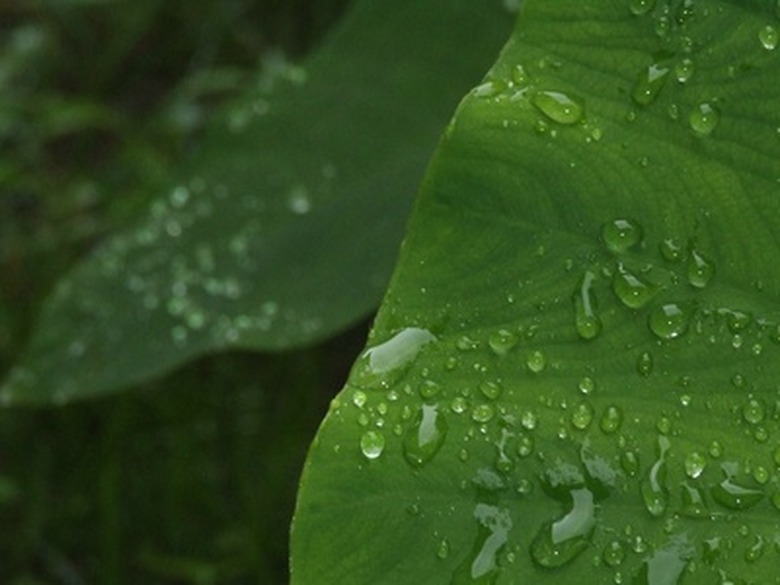How To Grow Elephant Ear Plants In Texas
Things Needed
- Compost
- Sphagnum peat moss
- Elephant ear bulb
- Mulch
- Fertilizer
- Pruning shears
Elephant ear plants are native to tropical Asia and derived their name from their huge, 2-foot-wide, 3-foot-long, heart-shaped leaves. The plants grow 4 to 8 feet in height and do well in Texas. If you live in the warmer areas of the state, grow the elephant ear in the shade. Northern Texas gardeners can plant theirs in morning sun with afternoon shade.
Step 1
Ready the planting area by digging into the soil to a depth of 12 inches. Crush the soil to reduce any large clumps. Remove any rocks or other debris.
- Elephant ear plants are native to tropical Asia and derived their name from their huge, 2-foot-wide, 3-foot-long, heart-shaped leaves.
- Northern Texas gardeners can plant theirs in morning sun with afternoon shade.
Step 2
Mix a 4-inch-thick layer of compost and a 2-inch layer of sphagnum peat moss into the soil to a depth of 8 inches. If you live in the Dallas area, the peat moss is especially important to counteract your alkaline soil.
Step 3
Plant the elephant ear bulbs deep enough so that the tip of the bulb is just slightly exposed.
Step 4
Water the planting bed to a depth of 4 inches and keep the soil moist, not saturated, at all times. During Texas summers, water more often.
Step 5
Spread a 3-inch layer of mulch surrounding the elephant ear plant when it reaches 1 foot in height. Mulch will help the soil retain moisture during the hottest days in the Texas summer.
- Mix a 4-inch-thick layer of compost and a 2-inch layer of sphagnum peat moss into the soil to a depth of 8 inches.
- If you live in the Dallas area, the peat moss is especially important to counteract your alkaline soil.
Step 6
Fertilize the elephant ear once a month during the growing season. Use a 20-20-20 water soluble fertilizer at the rate suggested on the label. In Texas the best time of day to apply fertilizer is early in the morning or in the early evening after the sun sets.
Step 7
Dig up the elephant ear bulb when the leaves begin to yellow and die if you live in an area of Texas that receives frost. Cut off the leaves and the stems. Dry the bulb well, wrap it in peat moss and store it in a warm, dry area. Gardeners in frost-free regions in Texas can leave the bulb in the ground over the winter.
- Fertilize the elephant ear once a month during the growing season.
- Dig up the elephant ear bulb when the leaves begin to yellow and die if you live in an area of Texas that receives frost.
References
- "American Horticultural Society: A-Z Plant Encyclopedia of Garden Plants"; Christopher Brickell and H. Marc Cathey, Editors-in-Chief; 2008
